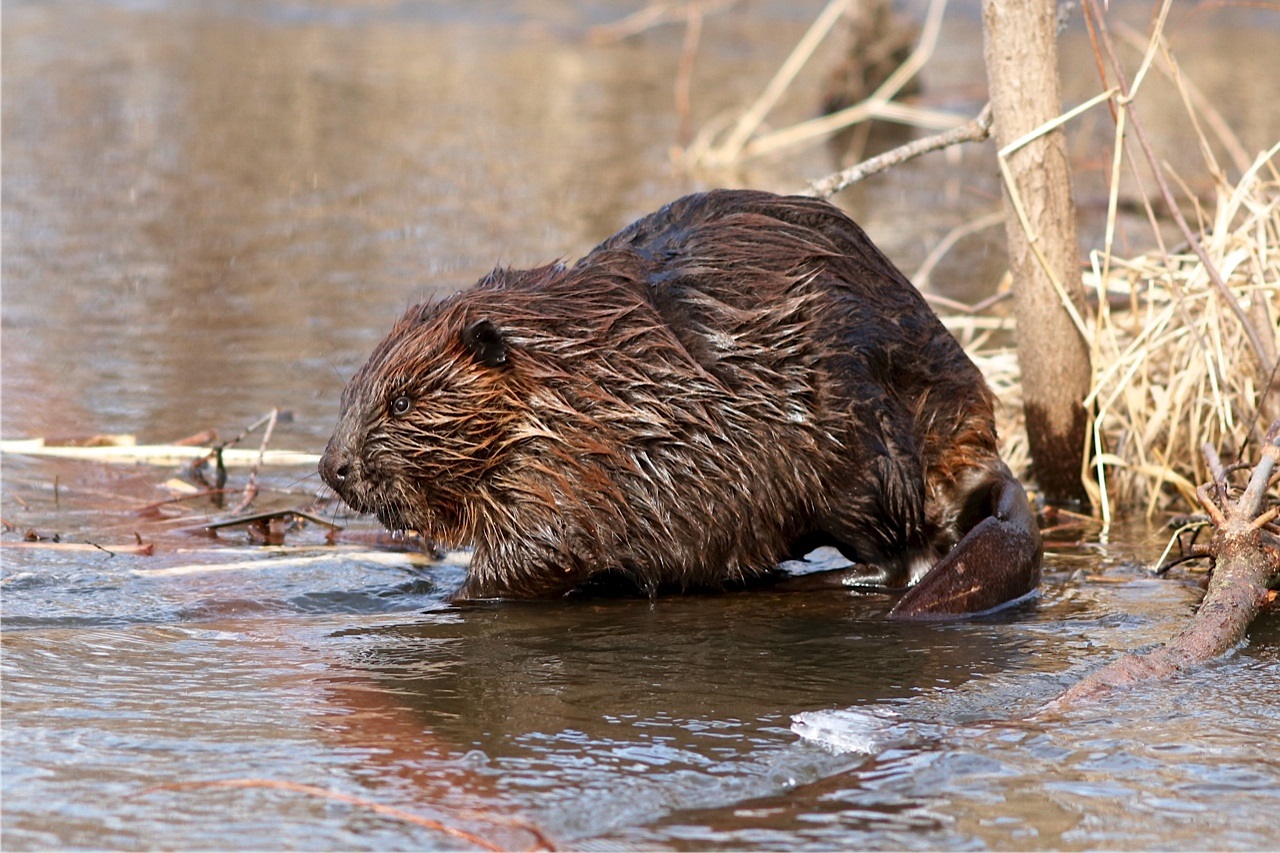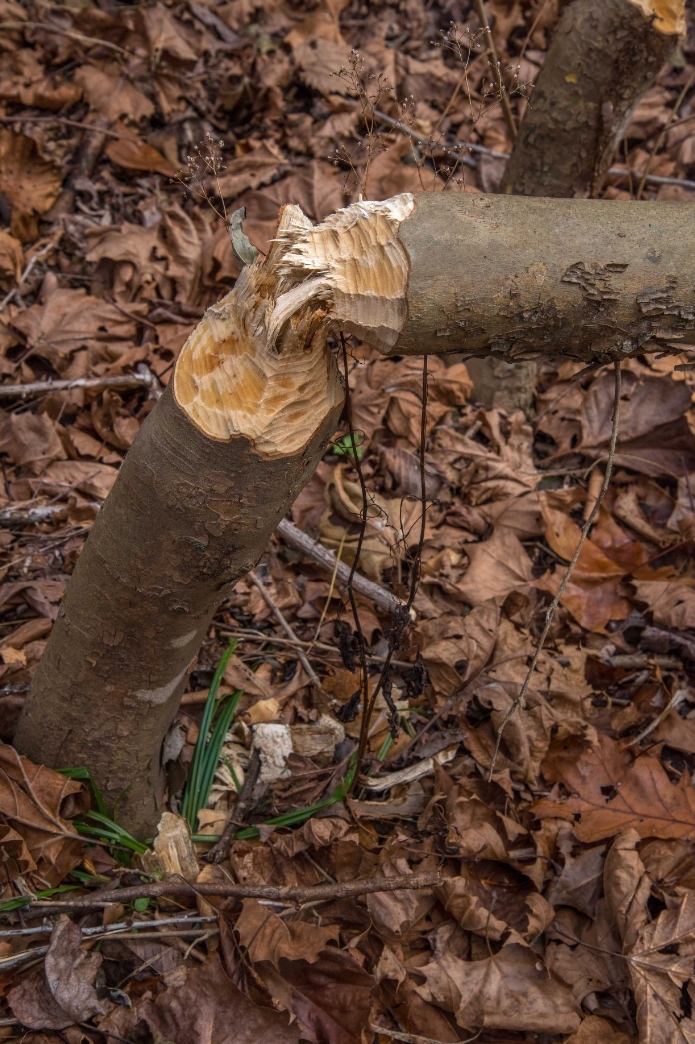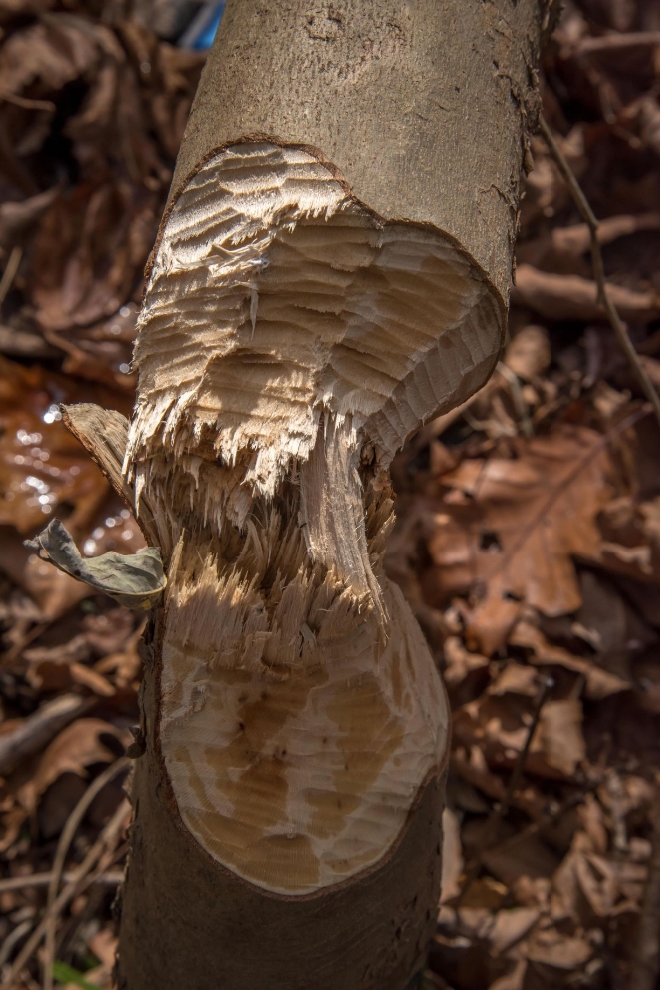
Courtesy US FWS, Larry Palmer, Photographer
 Beaver-Chewed Tree
Beaver-Chewed Tree
Courtesy US FWS, Brett Billings, Photographer
 Beaver-Chewed Tree
Beaver-Chewed Tree
Courtesy US FWS, Brett Billings, PhotographerI’m a beaver believer. These remarkable rodents are a critical part of the ecosystem, a keystone species. The beaver’s role in creating wildlife and fisheries habitat, filtering and cooling water, and adding new water storage capacity, is essential for our prolonged drought in a warming climate.
When I had a neighbor call a few weeks ago to report he thought a beaver might be cutting down his aspen trees. I was in disbelief. Right here in our little city of Smithfield no less! John invited me over to confirm his suspicions.
After inspecting the tree stumps, teeth marks were undoubtedly those of beaver. We discussed on how to address the situation. John had lost several thousand dollars-worth of trees, and was quite desperate to remediate the situation. I suggested reporting the rogue beaver to animal control or UDWR. Perhaps they could live trap and transport the animal to a more favorable location, while dreading the possibility of having to destroy my iconic, heroic mammal friend. In the interim, I suggested he use chicken wire to save what remained. Another personal conflict arose from my position as Smithfield Tree Committee chair. I was fully aware of the many values urban forests offer to our local environment and quality of life. It was my mission to protect our trees.
I inquired as to where the beaver was setting up shop. There must be a tangle of aspen leavings nearby. John hadn’t noticed any. I began searching the stream to find the missing trees, never expecting to see a beaver. Not more than 20 yards upstream from his property boundary, there it was. I quickly took a picture before it slid into the water disappearing beneath the ice.
I returned to my neighbor who was busy installing chicken wire around his remaining aspen. He too was not wishing to exterminate the animal, but there were homes with aspen, willow, and cottonwood both up and downstream from our location, a veritable feast for this wanderer. I mentioned that I had some acquaintances at USU who worked with beaver reintroduction, and may offer some solutions as well.
Given its small size and unexpected location, this was most likely a two-year-old juvenile who had been forced from its family, similar to how we gently nudge our young adults out the door. I was well acquainted with our mountain landscape and quite certain this beaver had traveled a distance of many miles to end up in Smithfield.
After consulting my USU friends, it did not bode well for poor beaver. To catch and release this animal during the winter offered little hope for its survival. Further, it would not fare well in several months of captivity, being alone in a high stress environment.
I’m now waiting to hear from my neighbor for the rest of the story. May it be favorable for this remarkable aquatic mammal, so essential for creating healthy watersheds, which equals abundant, high quality water!
Jack Greene for Bridgerland Audubon, and I’m wild about Utah’s wild beaver!
Credits:
Picture: Courtesy US FWS, Larry Palmer & Brett Billings, Photographers https://images.fws.gov/
Audio: Courtesy & © Friend Weller, https://npr.org/
Text: Jack Greene, Bridgerland Audubon, https://bridgerlandaudubon.org/
Additional Reading: Lyle W Bingham, Webmaster, and Jack Greene, Author, Bridgerland Audubon, https://bridgerlandaudubon.org/
Additional Reading:
Jack Greene’s Postings on Wild About Utah, https://wildaboututah.org/author/jack/
Bingham, Lyle, Welcoming Rodent Engineers, Wild About Utah, February 7, 2022, https://wildaboututah.org/welcoming-rodent-engineers/
Heers, Mary, Beaver Tail Slap, Wild About Utah, October 12, 2020, https://wildaboututah.org/beaver-tail-slap/
Heers, Mary, Birch Creek Beaver Restoration, Wild About Utah, June 20, 2022, https://wildaboututah.org/birch-creek-beaver-restoration/
Hellstern, Ron, Leave it to Beaver, Wild About Utah, July 30, 2018, https://wildaboututah.org/leave-it-to-beaver/
Leavitt, Shauna, Beaver–Helping Keep Water on Drying Lands, Wild About Utah, April 17, 2017, https://wildaboututah.org/the-beaver-helping-keep-water-on-drying-lands/
Leavitt, Shauna, Beaver in Utah’s Desert Rivers, Wild About Utah, July 6, 2020, https://wildaboututah.org/beaver-in-utahs-desert-rivers/
Leavitt, Shauna, Proposed Beaver Holding Facility in Millville, Utah, Wild About Utah, September 3, 2018, https://wildaboututah.org/proposed-beaver-holding-facility-in-millville-utah/
Leavitt, Shauna, Sixty In-stream Habitat Structures in Four Days: Demonstrating Creek Restoration Techniques, Wild About Utah, December 18, 2017, https://wildaboututah.org/sixty-instream-habitat-structures-in-four-days-demonstrating-creek-restoration-techniques/
Strand, Holly, Beavers: The Original Army Corps of Engineers, Wild About Utah, April 29, 2010, https://wildaboututah.org/beavers-the-original-army-corps-of-engineers/
